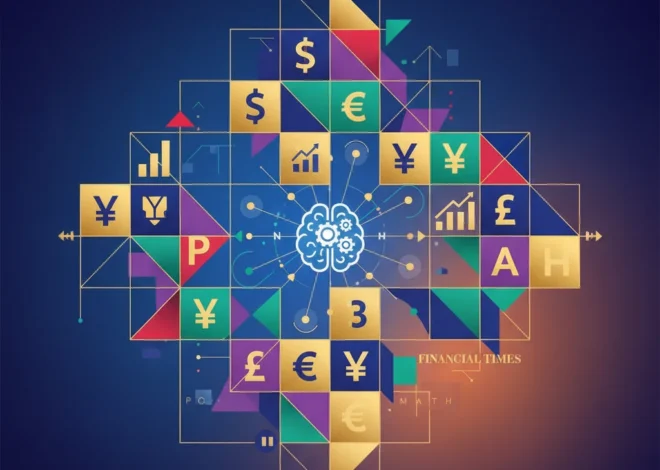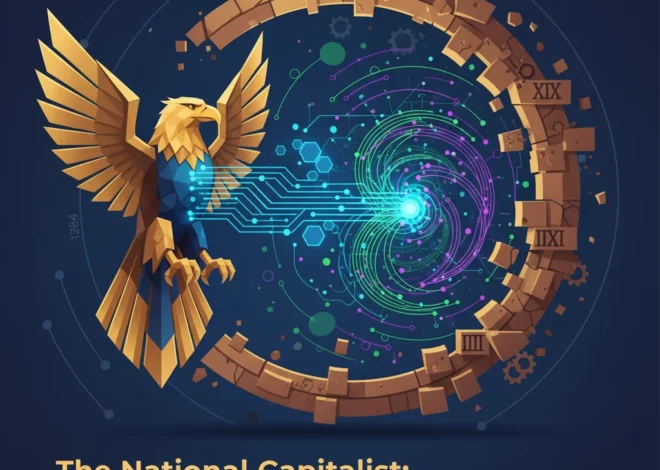
From Shouts to Servers: The Bittersweet Symphony of Financial Market Evolution
The Laughter and Sadness of Progress
A recent letter to the Financial Times captured a profound sentiment in just a few words. Responding to a cartoon by Banx depicting the transformation of the Chicago Mercantile Exchange (CME), a reader from Venice, CA, wrote that it “made me laugh then made me sad. It made me laugh because it was funny and it made me sad because it was true.” (source)
This simple observation perfectly encapsulates the dual nature of technological disruption in the world of finance. The cartoon likely depicted the stark contrast between the chaotic, vibrant, human-packed trading pits of yesteryear and the sterile, silent, server-filled data centers that power today’s global markets. It’s a visual gag with a deep, underlying truth about progress: for everything we gain in efficiency, speed, and access, something is inevitably lost. The roar of the crowd has been replaced by the hum of cooling fans. The intricate language of hand signals has been superseded by the silent flash of fiber-optic light.
This evolution from open-outcry trading to high-frequency algorithmic execution is more than just a technological shift; it’s a fundamental reshaping of market structure, the nature of investing, and the very culture of finance. It’s a story of innovation and obsolescence, of democratization and new forms of exclusivity. Let’s journey from the boisterous pits to the quiet racks of servers to understand this transformation and what it means for the future of the global economy.
The Roar of the Pit: A World of Controlled Chaos
For over a century, the heart of the financial world beat in places like the trading floor of the New York Stock Exchange (NYSE) or the agricultural pits of the Chicago Mercantile Exchange. These were not offices; they were arenas. Imagine hundreds of traders packed into octagonal “pits,” clad in brightly colored jackets to identify their firms, shouting, gesturing, and communicating in a unique, high-stakes sign language. This was the “open outcry” system.
In this system, prices were discovered through a raw, human process of bids and offers yelled across the floor. It was transparent in the most literal sense—you could see and hear the market moving. A trader’s success depended on a unique blend of sharp intellect, physical stamina, a powerful voice, and an intuitive feel for market sentiment. They were reading not just the numbers, but the fear, greed, and panic in the eyes of their fellow traders. This human element, while prone to error and emotion, was also a powerful mechanism for absorbing market shocks and establishing fair value through direct negotiation.
The culture was legendary. It was a high-pressure, high-reward environment that fostered intense camaraderie and fierce competition. Yet, for all its romanticism, the open outcry system was a product of its analog era. It was relatively slow, geographically constrained, and expensive. The reams of paper tickets created after each trade were a recipe for clerical errors. As global markets grew more interconnected and the demand for faster execution intensified, the stage was set for a digital revolution.
The Digital Tsunami: How Fintech Rewrote the Rules
The transition didn’t happen overnight. It began with the introduction of early electronic systems that supplemented floor trading. The CME’s Globex platform, launched in 1992, was a pioneering effort that allowed for after-hours electronic trading. Initially met with skepticism by floor veterans, the efficiency, cost-effectiveness, and global reach of electronic trading were undeniable.
The real sea change occurred with the explosion of the internet and advancements in computing power. This wave of financial technology, or fintech, fundamentally altered the landscape. Algorithmic trading—using computer programs to execute trades based on predefined criteria—began to dominate. This evolved into High-Frequency Trading (HFT), where sophisticated algorithms execute millions of orders in fractions of a second, capitalizing on minuscule price discrepancies.
The advantages were clear:
- Speed: Execution times dropped from minutes to microseconds.
- Liquidity: Electronic markets could handle immense volumes, theoretically making it easier to buy and sell assets.
- Cost: Spreads (the difference between the buy and sell price) narrowed dramatically, and commissions plummeted, benefiting retail investors. According to one study, the rise of electronic trading and HFT has been linked to a significant reduction in trading costs for investors (source).
- Access: Investors from anywhere in the world could now access markets 24/7, breaking the geographical monopoly of cities like New York and Chicago.
By 2015, the CME Group, a bastion of open-outcry for 167 years, announced the closure of most of its futures trading pits, acknowledging that electronic trading accounted for more than 90% of its volume. The silence that fell over the once-deafening floors was the sound of an era ending.
A Tale of Two Eras: The Trading Floor vs. The Data Center
The functional difference between these two periods of the stock market is staggering. The skills required, the speed of operations, and the very nature of market participation have been completely redefined. The table below highlights this stark contrast.
| Metric | Open Outcry Era (c. 1980s) | Electronic Trading Era (c. 2020s) |
|---|---|---|
| Primary Location | Physical trading floor (e.g., CME, NYSE) | Co-located data centers (e.g., Mahwah, NJ; Aurora, IL) |
| Execution Speed | Seconds to minutes | Microseconds to nanoseconds |
| Key Personnel | Floor traders, brokers | Quantitative analysts, programmers, data scientists |
| Required Skills | Loud voice, quick math, intuition, physical presence | Advanced mathematics, C++, Python, machine learning |
| Trading Volume | Millions of shares/contracts per day | Billions of shares/contracts per day |
| Basis of Advantage | Information flow on the floor, relationships | Speed of algorithm, proximity to exchange server |
| Primary Risk | Human error, miscommunication | Algorithmic failure, “flash crashes,” systemic glitches |
This transition has had a profound impact across the entire financial ecosystem. Traditional banking institutions have had to invest billions in technology to keep up, while a new generation of fintech startups challenges their dominance. The very study of economics has shifted, with a greater emphasis on computational models and data analysis to understand market behaviors that are now driven by code, not crowds.
The Next Frontier: Decentralization and AI
The evolution, of course, does not stop with servers in a data center. The same forces of decentralization and automation that dismantled the trading pits are now aiming at the exchanges themselves. The rise of blockchain technology and decentralized finance (DeFi) proposes a future where intermediaries like banks and exchanges are no longer necessary. Proponents envision a world of peer-to-peer trading executed via smart contracts on a distributed ledger, representing a potentially even more radical shift than the move from pits to platforms.
While still in its infancy and facing significant regulatory and scalability hurdles, DeFi embodies the ultimate conclusion of this trend: a financial system that is purely code. The Bank for International Settlements has noted that while DeFi offers the potential for more efficient and accessible financial services, it also introduces new and complex risks that need to be managed (source).
Simultaneously, Artificial Intelligence (AI) is adding another layer of complexity and sophistication. AI-driven trading models can now learn from vast datasets, adapt their strategies in real-time, and potentially anticipate market movements with a level of insight that surpasses even the most brilliant human “quant.” The arms race is no longer just for speed, but for intelligence.
Conclusion: Honoring the Past, Building the Future
The laughter and sadness elicited by a simple cartoon remind us that progress is a complex, human story. The world of the open-outcry trading floor is gone, and it’s not coming back. We can feel a sense of nostalgia for the color, energy, and human drama of that lost era. That is the sadness. At the same time, we can appreciate the immense benefits its successor has brought: lower costs, greater access for retail investors, and a truly global, interconnected market. That is the humor in its stark, quiet efficiency.
The core challenge for the modern financial industry—for regulators, investors, and technologists—is to harness the incredible power of this new paradigm while mitigating its novel risks. It’s about ensuring that as our markets become more automated and abstract, they also become more resilient, fair, and transparent. The ghost of the trading floor serves as a permanent reminder that behind every transaction, every algorithm, and every flashing data point, the goal remains the same: to efficiently allocate capital and power the human ambitions that drive the global economy.


